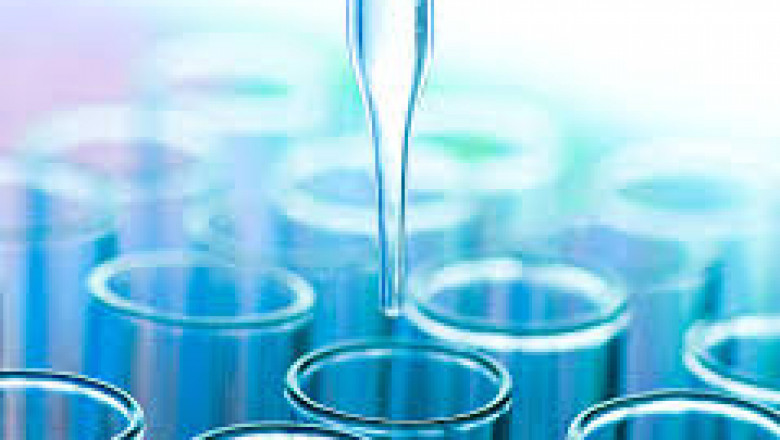views
These techniques are fundamental in diagnostics, research, and various scientific investigations, including genetic testing, forensic analysis, and disease detection. The success of PCR and sequencing heavily relies on the quality and purity of the extracted nucleic acids.
The Role of Nucleic Acid Extraction
Nucleic acid extraction involves isolating DNA or RNA from a biological sample, such as blood, tissue, or cell cultures. The extraction process is designed to remove contaminants like proteins, lipids, and cellular debris, which can interfere with downstream applications.
High-quality nucleic acids are essential for PCR amplification and sequencing as they serve as the template for these processes. Any impurities or degradation in the extracted nucleic acids can lead to failed experiments, inaccurate results, or misinterpretation of genetic information.
Enhancing PCR Accuracy with Pure DNA/RNA
Polymerase chain reaction (PCR) is a widely used technique for amplifying specific DNA sequences. PCR relies on a high-fidelity DNA template to produce accurate and reproducible results. The efficiency and specificity of PCR amplification are significantly influenced by the quality of the extracted nucleic acids.
- Eliminating Contaminants: Nucleic acid extraction ensures the removal of contaminants that can inhibit the PCR process. Proteins, salts, and lipids can bind to the DNA or RNA, preventing proper amplification or causing non-specific reactions. By ensuring that the extracted nucleic acids are free from such impurities, the PCR process can proceed smoothly and amplify the desired target sequence with greater accuracy.
- Preserving DNA Integrity: During the extraction process, it is crucial to prevent DNA degradation. Enzymes like nucleases, which break down nucleic acids, are often present in biological samples. A well-executed extraction protocol minimizes DNA degradation, maintaining its integrity and ensuring that it is in optimal condition for PCR amplification. This is particularly important when working with degraded or difficult samples, such as ancient DNA or clinical specimens.
- High-Quality DNA for Optimal Amplification: The success of PCR depends on the availability of high-quality DNA. If the nucleic acid is fragmented or degraded during extraction, PCR may not be efficient, or it may lead to low yields or inaccurate amplification. Extraction methods that preserve the integrity of the DNA ensure that the PCR process is more likely to yield accurate, reproducible results.
Improving Sequencing Accuracy
DNA and RNA sequencing technologies are used to determine the exact sequence of nucleotides in a sample’s genetic material. This process is used in various applications, including whole-genome sequencing, transcriptomics, and genetic mutation analysis.
- High-Quality Templates for Sequencing: Sequencing technologies, such as next-generation sequencing (NGS) and Sanger sequencing, rely on high-quality DNA or RNA to generate accurate sequence reads. Poor-quality nucleic acids can result in sequencing errors, including base miscalls and incomplete reads. Efficient nucleic acid extraction ensures that the DNA or RNA is free from inhibitors that could affect sequencing enzymes and lead to poor-quality results.
- Minimizing Contaminant Interference: Contaminants like proteins, polysaccharides, and other cellular materials can interfere with sequencing reactions, leading to poor-quality data. Effective extraction methods ensure that these contaminants are removed, providing clean DNA or RNA that is suitable for sequencing. This reduces the chances of errors and ensures high-quality data that can be accurately analyzed for genetic variations.
- Higher Yield and Read Depth: The yield of nucleic acids from the extraction process influences the depth of sequencing coverage. Low-quality or insufficient nucleic acids can lead to lower sequencing yields, reducing the depth of coverage for a given sample. High-quality extraction protocols ensure that sufficient nucleic acids are isolated, leading to deeper sequencing coverage, which enhances the accuracy of variant detection and increases the confidence in the results.
- Sensitive Detection of Low-Abundance Targets: Accurate nucleic acid extraction is particularly important when working with low-abundance targets, such as rare mutations or microbial DNA. Poor extraction can lead to loss of sensitive sequences, leading to missed genetic variations or pathogens in diagnostic testing. By optimizing the extraction process, researchers and clinicians can ensure that even low-abundance nucleic acids are preserved for accurate sequencing and detection.
Advances in Nucleic Acid Extraction Techniques
The field of nucleic acid extraction has seen significant advancements over the years, with improved methods and technologies that enhance the quality of isolated DNA and RNA. These advancements include the development of automated extraction systems that offer high throughput, precision, and consistency, which are especially beneficial in clinical and research laboratories where large numbers of samples need to be processed efficiently.
Conclusion
Nucleic acid extraction is a critical step in ensuring the accuracy of PCR and sequencing technologies. By providing high-quality, contaminant-free DNA or RNA, effective extraction methods directly impact the success of these downstream applications.
High-quality nucleic acids allow for reliable PCR amplification, accurate sequencing, and the detection of rare genetic variants. As the demand for precision and high-throughput applications increases in clinical diagnostics and research, optimizing the nucleic acid extraction process will remain essential for improving the reliability and reproducibility of molecular biology experiments.






















Comments
0 comment